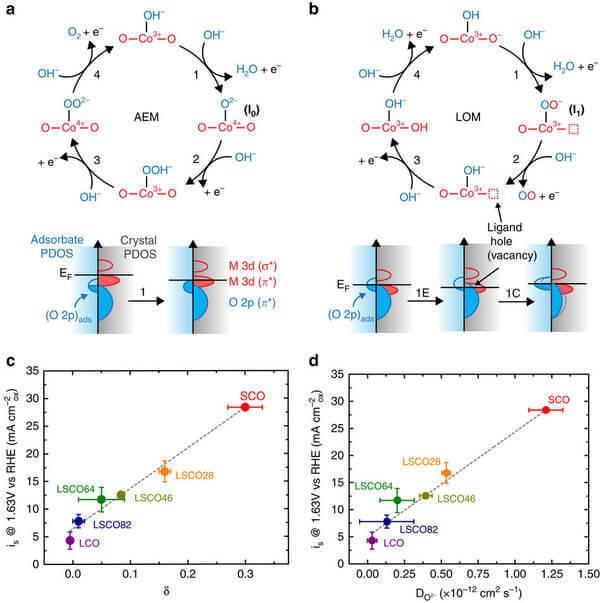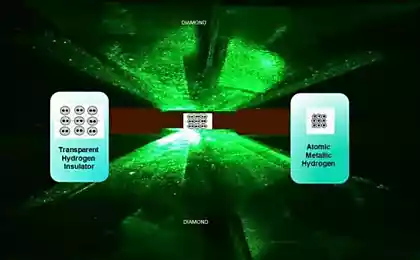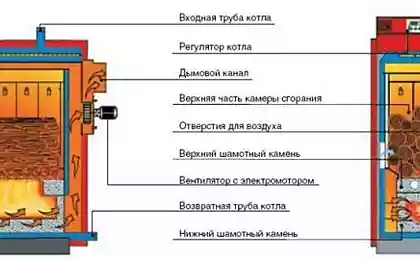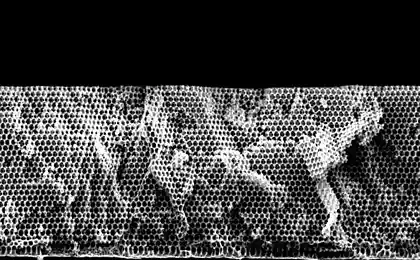433
The catalyst, increasing the effectiveness of hydrogen fuel
SKOLKOVO Institute of science and technology, the University of Texas at Austin and the Massachusetts Institute of technology reported the discovery of a new catalyst, significantly increase the efficiency of the electrolytic decomposition of water in alkaline solutions. The evolution of oxygen and hydrogen from water by electrolysis is the key process for rapidly developing renewable ekologicheski clean energy based on the use of hydrogen. The results of the work published in the prestigious journal Nature Communications
The widespread use of water electrolysis in the modern energy industry needs the solution of several technological problems, such as high energy consumption, high cost of electrolyzers and limited duration of their work. In particular, the possibility of large-scale application limited by the high cost of catalysts based on noble metals such as platinum and iridium.

“The oxygen evolution reaction from water remains a significant problem not only in cells, but fuel cells and metal-air batteries. If we had developed a catalyst for the decomposition of water into hydrogen and oxygen on the basis of cheap and available materials, we would have a commercially viable method of producing hydrogen using renewable energy sources. For example, it would allow us to construct a car that runs on water, with mileage comparable to the mileage of vehicles using gas as fuel,” says first author T. Mefford. “In order to develop such catalysts, we have at the atomic level to understand the processes and factors that affect their work and features”. A team of researchers under the guidance of Professor K. Stevenson synthesized a number perovskitelike oxides of cobalt and lanthanum, whose properties can be controlled to change by replacing parts of lanthanum for strontium. Using the most modern methods of transmission electron microscopy, the researchers conducted a detailed study of the structure of materials at the surface and in the bulk crystals (Professor A. Abakumov, Skoltech). The obtained data were used for mathematical modeling of the reaction of water electrolysis in alkaline solutions (prof A. Hood, MTI). As a result, the team formulated the two most important criteria that determine the functional properties of katalizatora: the degree of covalently regard, the cobalt-oxygen (the energy proximity of the valence electrons of cobalt and oxygen) and the concentration of oxygen vacancies (positions in the crystal structure of the material that would have to be occupied by the oxygen atoms, but remain vacant in the active catalyst). Based on these criteria, the team Stevenson suggested that mixed oxygen-deficient oxide of cobalt and strontium, SrCoO2.7, as the basis for catalyst, 20 times more active in electrolysis of water than the best commercial catalyst IrO2 at a much lower cost.

The Central factor in improving the catalytic activity implies the involvement of oxygen atoms of the crystal surface in catalytic processes. Although further progress in increasing the activity of catalysts for the electrolysis of water will require more work, the results obtained have led to a deeper understanding of the mechanisms of operation of such catalysts and allowed us to formulate a strategy for their design.
“Now in our hands is a prototype of an improved catalyst for alkaline water electrolysis, giving us the momentum to overcome difficulties on the path to a successful implementation of electrolytic cells, fuel cells and batteries,” says Professor Stevenson. published
P. S. And remember, only by changing their consumption — together we change the world! ©
Join us in Facebook , Vkontakte, Odnoklassniki
Source: www.energy-fresh.ru/news/?id=12930
The widespread use of water electrolysis in the modern energy industry needs the solution of several technological problems, such as high energy consumption, high cost of electrolyzers and limited duration of their work. In particular, the possibility of large-scale application limited by the high cost of catalysts based on noble metals such as platinum and iridium.

“The oxygen evolution reaction from water remains a significant problem not only in cells, but fuel cells and metal-air batteries. If we had developed a catalyst for the decomposition of water into hydrogen and oxygen on the basis of cheap and available materials, we would have a commercially viable method of producing hydrogen using renewable energy sources. For example, it would allow us to construct a car that runs on water, with mileage comparable to the mileage of vehicles using gas as fuel,” says first author T. Mefford. “In order to develop such catalysts, we have at the atomic level to understand the processes and factors that affect their work and features”. A team of researchers under the guidance of Professor K. Stevenson synthesized a number perovskitelike oxides of cobalt and lanthanum, whose properties can be controlled to change by replacing parts of lanthanum for strontium. Using the most modern methods of transmission electron microscopy, the researchers conducted a detailed study of the structure of materials at the surface and in the bulk crystals (Professor A. Abakumov, Skoltech). The obtained data were used for mathematical modeling of the reaction of water electrolysis in alkaline solutions (prof A. Hood, MTI). As a result, the team formulated the two most important criteria that determine the functional properties of katalizatora: the degree of covalently regard, the cobalt-oxygen (the energy proximity of the valence electrons of cobalt and oxygen) and the concentration of oxygen vacancies (positions in the crystal structure of the material that would have to be occupied by the oxygen atoms, but remain vacant in the active catalyst). Based on these criteria, the team Stevenson suggested that mixed oxygen-deficient oxide of cobalt and strontium, SrCoO2.7, as the basis for catalyst, 20 times more active in electrolysis of water than the best commercial catalyst IrO2 at a much lower cost.

The Central factor in improving the catalytic activity implies the involvement of oxygen atoms of the crystal surface in catalytic processes. Although further progress in increasing the activity of catalysts for the electrolysis of water will require more work, the results obtained have led to a deeper understanding of the mechanisms of operation of such catalysts and allowed us to formulate a strategy for their design.
“Now in our hands is a prototype of an improved catalyst for alkaline water electrolysis, giving us the momentum to overcome difficulties on the path to a successful implementation of electrolytic cells, fuel cells and batteries,” says Professor Stevenson. published
P. S. And remember, only by changing their consumption — together we change the world! ©
Join us in Facebook , Vkontakte, Odnoklassniki
Source: www.energy-fresh.ru/news/?id=12930
Clinical Psychologist: What Happens to Us With Age
How to make a TREE of HAPPINESS with his own hands























